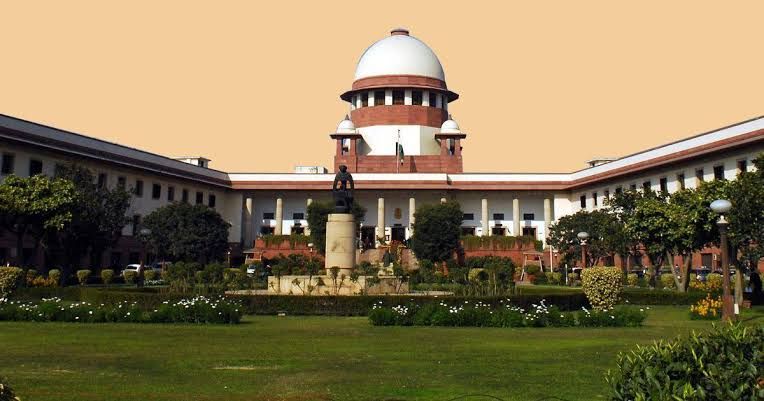Author: Kritika Prakash, a student at Government Law College, Mumbai
The Kawas Manekshaw Nanavati v. State of Maharashtra case is one of the most important and infamous landmark judgments of all time in India. It is not just intriguing but also a very intricate case with several important small details that make the case extremely complicated. The case was fascinating but also significantly shifted the Indian legal system. This case highlighted the restrictions of a jury system and widened the interpretation of culpable homicide. K.M. Nanavati was charged with the murder of deceased Prem Ahuja under sections 302 and 304, Part 1 of the Indian Penal Code. The facts of the case started with Commander Kawas Manekshaw Nanavati who was a Parsi and a British citizen. He was second in command of the Indian Naval Ship ‘Mysore’. He was married to Syliva Nanavati and had two sons and a daughter. Nanavati and his family used to move to different places due to Nanavati’s work and they moved to Mumbai where the mishappenings took place. In Mumbai, they made the acquaintance of a businessman namely Prem Ahuja, and his sister Mimi Ahuja because of a consignment related to the purchase of a naval ship. Nanavati was often out of station due to the nature of his profession. During his absence, Sylvia Nanavati developed an adulterous relationship with Prem Ahuja. After Nanavati returned back he noticed the change in the behavior that Sylvia had towards him. At first, he excused her behavior but her distanced demeanor started increasing day by day. He finally called her out for this on April 29, 1959, and Sylvia confessed about her increased closeness with Prem. Nanavati felt immensely hurt and his rage surfaced. That evening, Nanavati took Sylvia and their children to Metro Cinema Hall, dropped them and went to confront Ahuja. Nanavati, firstly, headed to the naval base and took his semi-automatic revolver and six cartridges on the false pretext that he would be traveling to Ahmednagar alone by night and needed the gun for his safety. After informing the authorities of the Ahmednagar story and putting the gun and cartridges in a brown envelope, he went immediately to Ahuja’s office but, Ahuja was not present there. He headed to his residence then and confirmed his presence there from the servant at the residence. After the confirmation, he stormed into Ahuja’s bedroom with the envelope. He closed the door behind him and confronted Ahuja about his intent concerning Nanavati’s wife and children. Ahuja reacted negatively to this following which they had a heated conversation. Three shots were fired and Nanavati killed Ahuja. Nanavati went straight to the Provost Marshal of the Western Naval Command and then he later surrendered to the Deputy Commissioner of Police.
Now, Nanavati’s counsel argued that after knowing about Sylvia’s relationship with Ahuja, Nanavati wanted to kill himself. After Sylvia tries to save him, he decides that he will confront Ahuja himself and ask him if he wants to marry his wife and take care of the children. He decided to use the gun that he got from his ship to suicide as he felt horrible after his listening to his wife’s confession. After he took the gun, he went to Ahuja’s residency and asked him the question to which Ahuja allegedly said “Am I to marry every woman I sleep with?” This enraged Nanavati and he threatened Ahuja to which Ahuja tried to grab the brown envelope. As a reaction, Nanavati took the gun out of the envelope and told Ahuja to get back. In the midst of the fight that broke between the two, shots went off accidentally and led to Ahuja’s death. Hence, Nanavati shot Ahuja under sudden and grave provocation. Thus, this was an act of culpable homicide and not murder. The prosecution argued that it was not a case of culpable homicide but a premeditated murder. They pointed out that Prem Ahuja had his towel intact when his body was found which is surprising because according to Defence, Nanavati and Ahuja had a scuffle between them. It was also brought to the notice of the cake that the witness in the whole episode was the servant who claimed that shots were fired and the entire event took place in less than a minute. The prosecution also contended that If it was an accident, Nanavati should have informed Ahuja’s sister who was present in the next room. Another interesting argument was that as per the statement of the Deputy Commissioner of Police after Nanavati admitted that he shot Ahuja, he even corrected his name which was misspelled in the police record. This demonstrated that he was capable of thinking normally at that moment. Nanavati was declared not guilty but a jury verdict of 8:1 in the session’s court. The session court’s judge disagreed with the verdict and the matter was brought in front of the Bombay High Court under section 307 of the Code of Criminal Procedure.
There were a lot of issues that surrounded this case such as “Did the High Court lack jurisdiction under Section 307 of the CrPC to examine the facts in order to determine the competency of the Sessions Judge’s referral?” and “Did the High Court have the power to strike aside a jury’s decision on the grounds of misdirection in charge under Section 3073 of the CrPC.”. But, the main questions that arose in every person’s mind irrespective of their legal background were “Was the jury’s decision reasonable and will any group of reasonable men, based on the facts presented to them, reach the same conclusion?” and “Whether the act was done really “the heat of the moment”or was it a premeditated murder?” The whole nation had their eyes on the case as the case marked itself as the first ‘trial by media’ and the first upper-class crime of passion. People watched as the first test for grave and sudden provocation was put forth. Considering the words, body language, and former mental background of the victim, will a reasonable man react in the same way to a provocation as the accused did? Sudden provocation only should be the cause of the fatal blow as a result of which the death happened. Premeditation of any sorts is not possible in such cases and hance, it is a ‘sudden’ provocation Now most importantly, the jury was in question. The jury was questioned on their credibility and whether this system of the jury was even efficient enough to judge cases surrounding so many complexities and should the emotions become so overwhelming for them to dismiss the guilt of a potential murderer completely. The law was seen very subjectively here ‘blinded’ the jury to objective pieces of evidence but, at the same time, to protect the sanctity of the law, it was important to be blind to feel human emotions. The court acknowledged the idea of mitigating the charge of murder to manslaughter and referred to the case of Mancini v. Director of Public Prosecutions. The court stated that the legal principle of reducing the murder to manslaughter cannot apply when the provocation incites the intention to kill or cause severe harm i.e then the offense is to be considered as murder and not manslaughter if a person forms an intention to kill or cause harm in the heat of the moment and is suddenly and gravely provoked. Attygale v. Emperor was also referred and the court established through it that the burden of proof lies on the prosecution. They pointed out that Section 80 of the Indian Penal Code, 1860 is to be referred to and the provisions under section 105 of the Indian Evidence Act. Section 80 states an exception that if an act is done accidentally or due to misfortune, considering no criminal intention was involved, then that act is not an offense. The burden lies on the prosecution to prove that the act was not an accident beyond any reasonable doubt. The court also referred to the case of Empress v. Khogayi which established that even the use of abusive language is enough to be considered provocation to which a person may lose their temper. When referring to the jury’s decision and the disapproval of the session’s court’s judge, the court mentioned the case of Ramanugrah Singh v. King Emperor which established that the judge should be convinced of the decision of the jury such that there is no reasonable doubt. They also mentioned the case of Emperor v. Ramadhar Kurmi in light of the questions raised about the intervention of the High Court. They held that the High Court can intervene in cases of misdirection of the judgment of the jury while Para 3 of Section 307 under CrPC necessitates the evaluation of evidence by both the jury and the judge The High Court held Nanavati guilty under Section 302 of the Indian Penal Code. The court emphasized that there was enough time between the time of confession and when the shots were fired. They also concluded that the jury was misdirected and Nanavati should be imprisoned for life. The Supreme Court, too, agreed with the High Court’s decision and sentenced him to life imprisonment.
K.M. Nanavati v. State of Maharashtra made history in a lot of ways. It led to the eradication of the jury system in India. It was commendable at the time as to how the Indian legal system handled this case when the media was buzzing. It made us question tons of things in our legal system and its credibility in imparting justice but to be able to distinguish between black and white in a grey case is no small feat. The judiciary system achieved it and proved its efficiency in every possible way.




